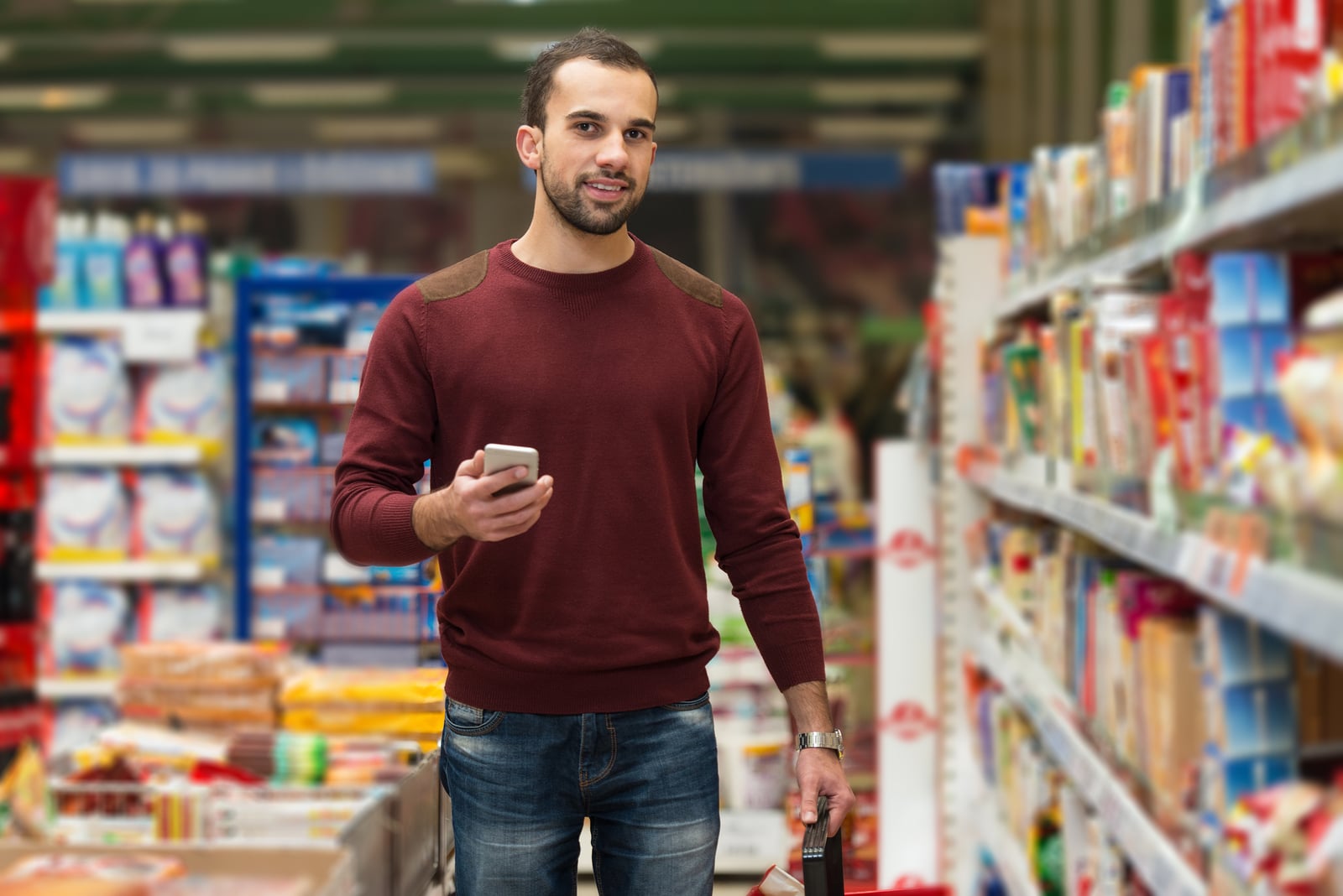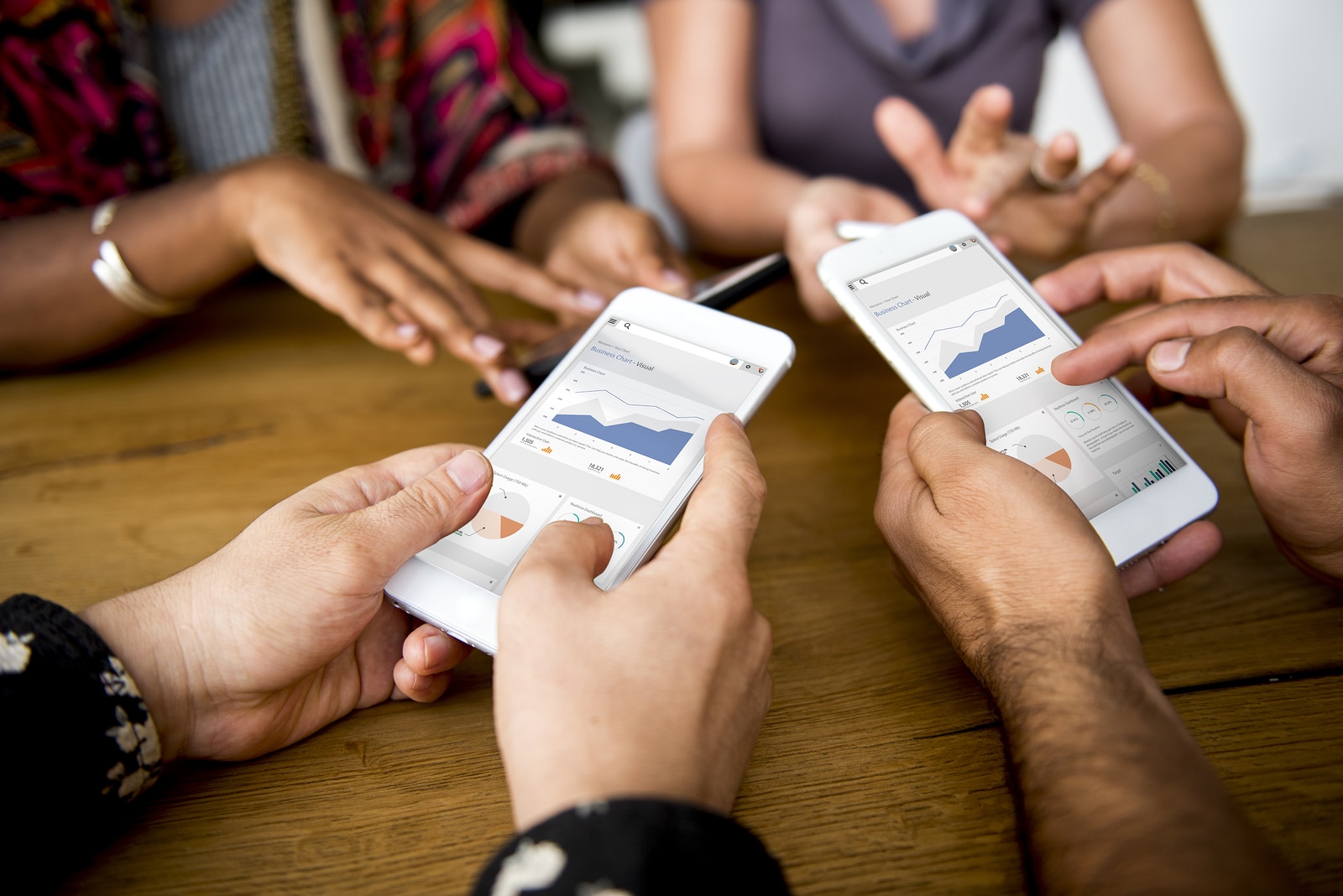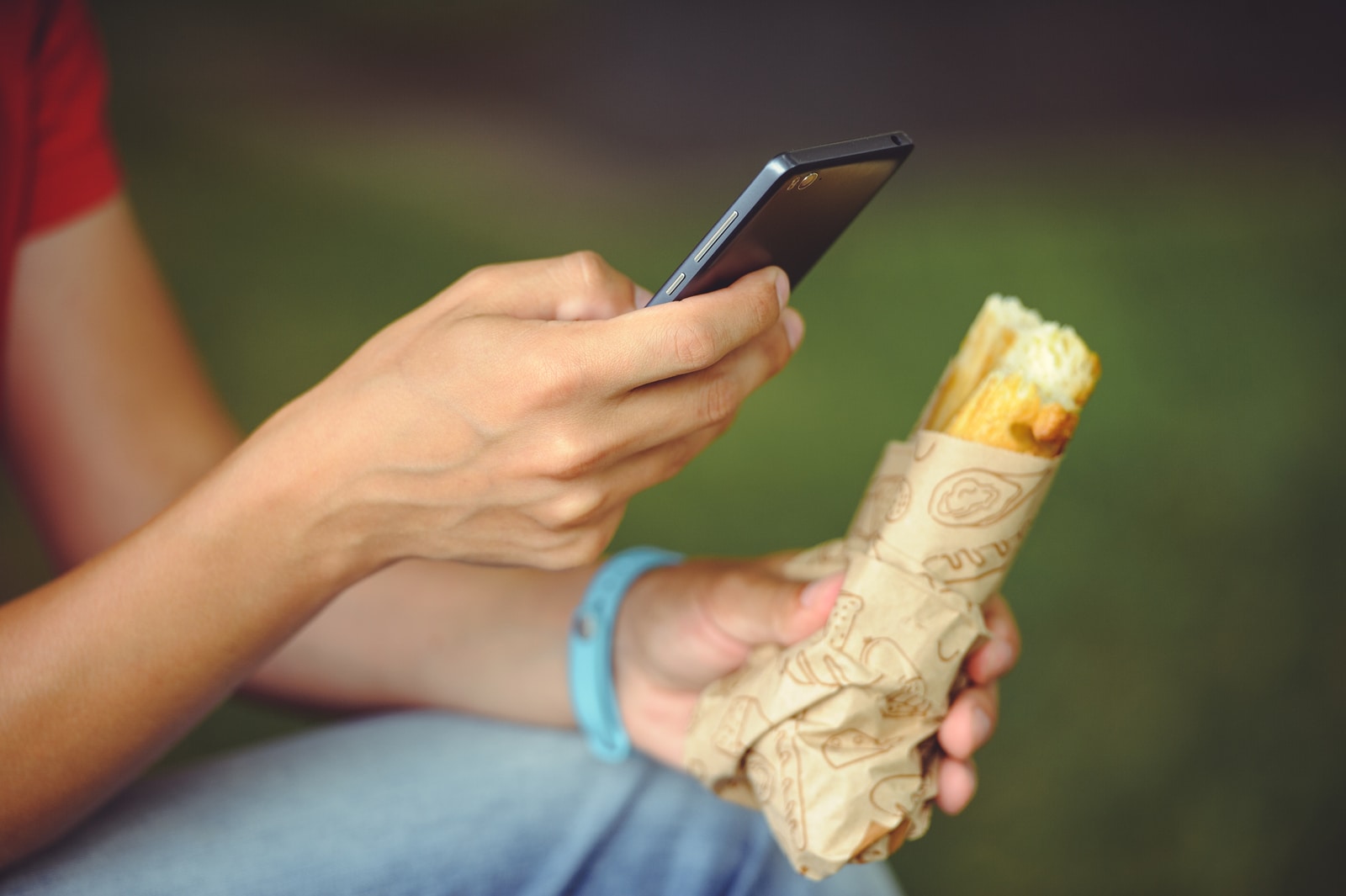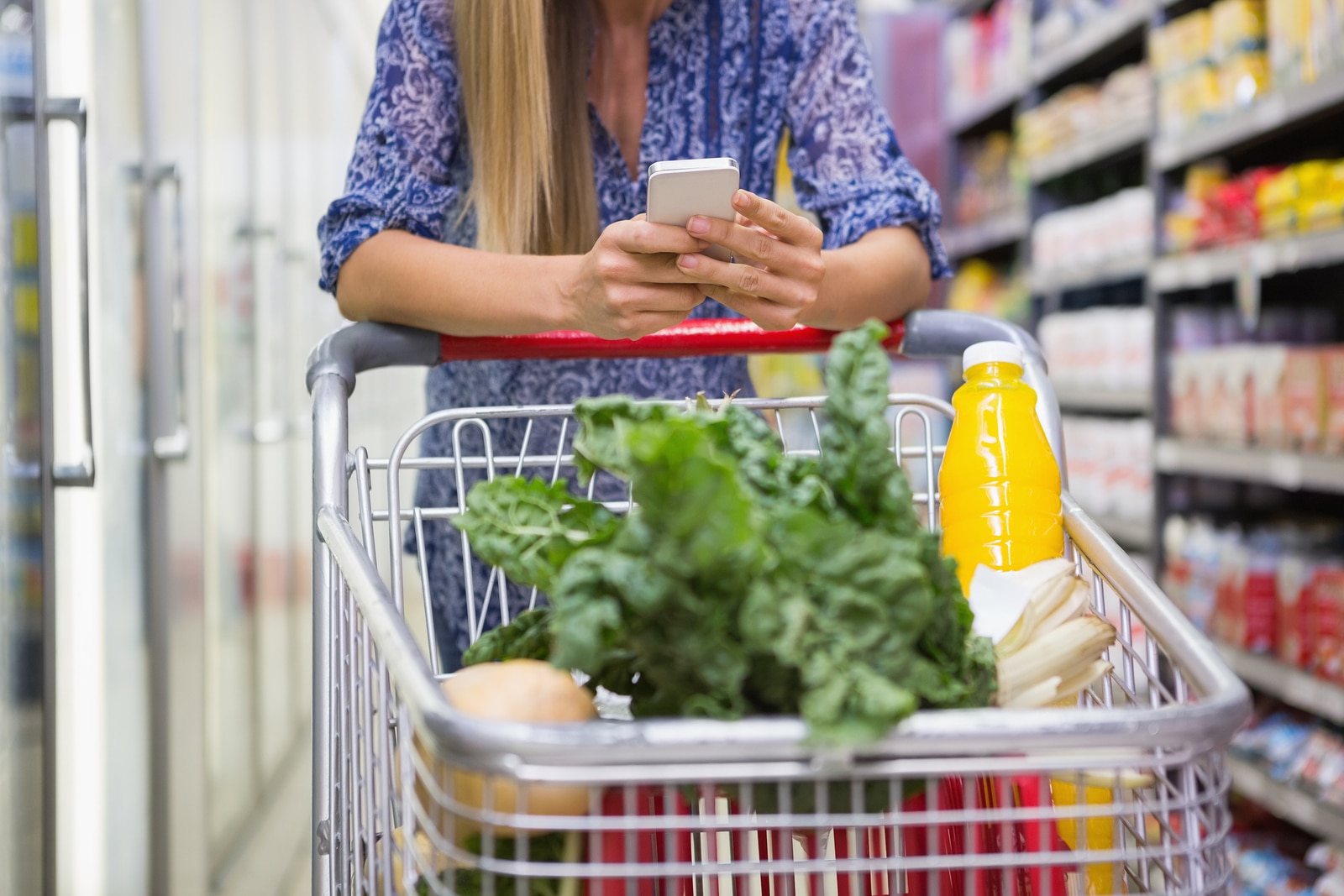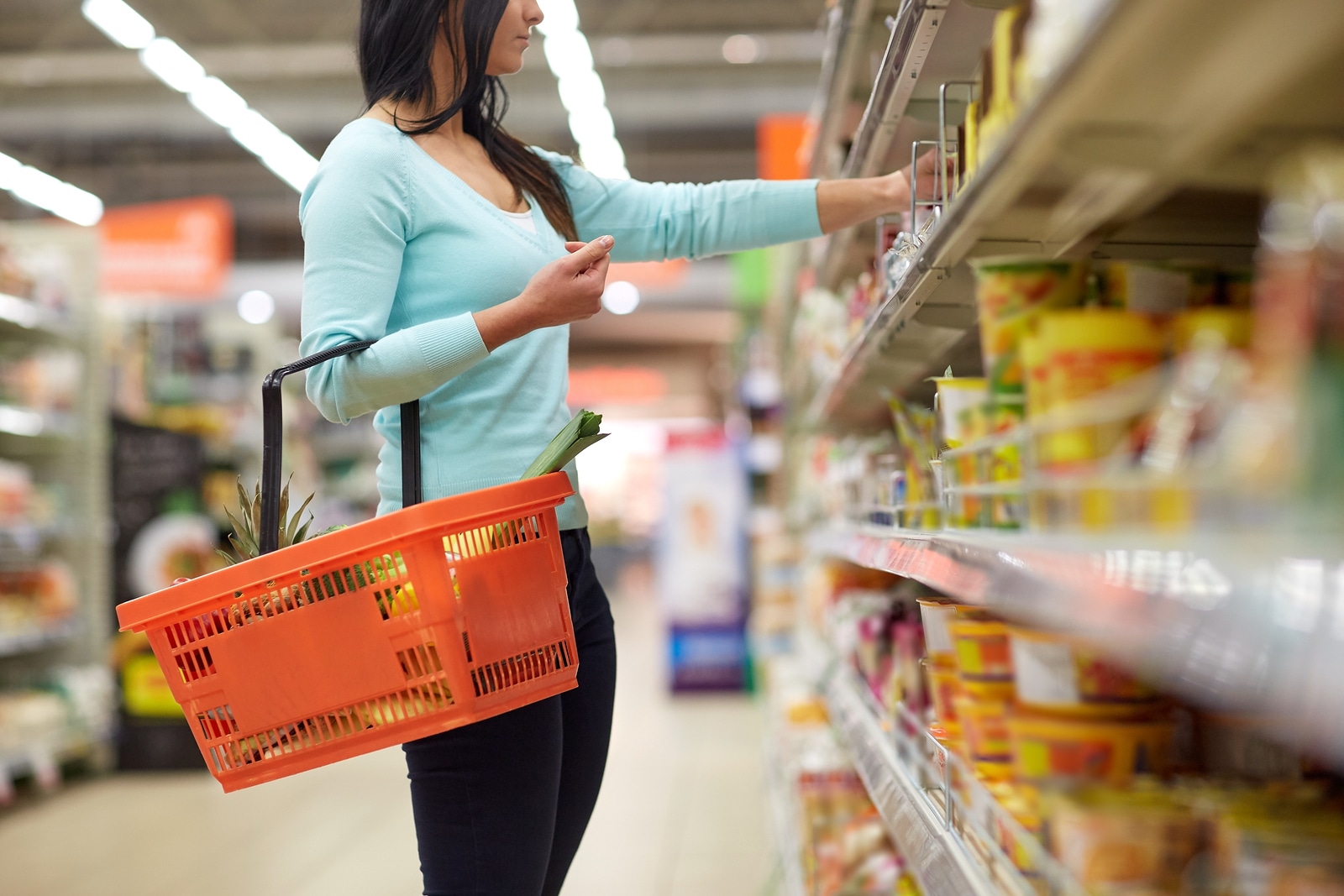When it comes to using apps in CPG marketing, brands need to focus not on acquisition but retention. Continue reading “Effective app-based CPG marketing strategies”
Year: 2018
Cool grocery coupon apps for Android for shopping-averse dads
My dad is kind of one of those old-school dads who, these days, I think only is represented in the movies and on TV. When I was growing up he always had his favorite recliner, he never missed watching his favorite football team’s big game, and he used to get lost like a little kid whenever he had to do the grocery shopping for us.
 He’s retired now, and we’ve had a few good laughs at how shopping-averse he used to be, and how he just couldn’t seem to ever find what we were looking for in those aisles, no matter how clearly labeled they were. Luckily, I think the dads in my generation are a bit more savvy about shopping, even if a few guys I know are just as shopping-averse. But they all agree that there’s nothing like finding the lowest prices. That’s why today I want to share some tips about grocery coupon apps for Android.
He’s retired now, and we’ve had a few good laughs at how shopping-averse he used to be, and how he just couldn’t seem to ever find what we were looking for in those aisles, no matter how clearly labeled they were. Luckily, I think the dads in my generation are a bit more savvy about shopping, even if a few guys I know are just as shopping-averse. But they all agree that there’s nothing like finding the lowest prices. That’s why today I want to share some tips about grocery coupon apps for Android.
These are apps that bring some serious savings to the shopping process. Some of them are, surprisingly, a lot of fun to use, turning trips to the grocery store into a hunt for points you can redeem for savings and rewards. So, what’s the best grocery coupon app, Android aficionados? Let me tell you about some that are super valuable.
Grocery Coupon Apps for Android
Android apps that make you money while you shop are a relatively new development, so before we get into my favorites, let’s talk about how the best retail and grocery coupon apps for Android work.
Basically, the best grocery coupon app—Android or iPhone compatible—gives you points for the things you do when you’re out shopping already, like scanning barcodes to get more info, making purchases, and even walking into the actual brick-and-mortar stores. For the online crowd, some of these apps give you points for that kind of shopping, too. Here, however, you get points for visiting online stores, watching videos about certain products, and, of course, making purchases.
There are also grocery coupon apps for Android that function more like traditional coupons. These apps give you a certain dollar amount or percentage off at the register. Either way—whether you get points and rewards or use digital coupons—you really can’t go wrong. When you’re done with all that shopping that you’re averse to, you’ll still have accrued some serious savings, and that always feels good.
The Best Grocery Coupon App: Androids and iPhones Make Shopping Easier
To be totally honest, I don’t really love grocery shopping, so I’m the type of shopper who gets in and out of a store as fast as possible. Shopping feels like an obstacle between me and my priorities, although I can tell you that I like it a whole lot more now that I’ve discovered that I can make money shopping using free Android and iPhone apps.
There are actually three grocery coupon apps that I especially like:
- Coupon Cactus: Coupon Cactus is a lot like those old paper coupons (which my dad never even tried to use): You get certain discounts on certain items at certain stores. The big difference is here you can do it online, too. Your savings sometimes adds up to a percentage of the total price—generally up to 30%—or to a set amount, like $2 off a featured product. Once you those savings reach $10 or more, you can cash out via PayPal, or get a check issued on a quarterly basis.
- SavingStar: SavingStar is another digital coupon app that pays users to shop at grocery and drugstores. What’s really cool is that more than 60,000 stores are part of SavingStar, and overall they represent more than 100 retail chains. It’s generally free to use, but beware: If an account is inactive for 180 straight days, they will charge a fee of $3.99. To take advantage of SavingStar, users either link their existing store loyalty cards to the app or submit receipts after they make purchases. The savings add up until the user can eventually cash out through PayPal, Upromise, or in the form of Starbucks, iTunes, or AMC Theatre gift codes. Again, I’m a PayPal guy, but sometimes I’ll go with AMC Theatre if there’s a new Marvel movie coming out that I want to catch.
- Shopkick: My favorite shopping rewards app is, hands down, Shopkick. It’s also the one I recommend to my dad friends who dislike shopping. This app gives users points—called kicks—for the kind of shopping they would be doing anyway, like making purchases, scanning barcodes of items, and even just walking into some favorite stores. How it works is incredibly simple, too, which you’d know is a good thing if you’d ever met my friends.
To put it simply, I’m a fan. Basically, Shopkick turns shopping into an actual game, like a scavenger hunt, and it’s really social. They keep a great community vibe on their social media, and users get awarded kicks when they refer friends who sign up. Users trade in kicks and get paid in gift cards to the stores they love to shop, or where they love to splurge—say on a quick cup of joe at Starbucks.
Those are, in my humble opinion, the best grocery coupon apps for Android. I should point out though that all of these work on iPhone, too. So, whether you’re a dad who doesn’t like going to the store (like mine), or one who actually enjoys shopping but would like to up your savings game, Shopkick is the app I would most strongly recommend. It has that perfect balance of great savings and fun, which turns shopping from a hassle into something you can actually look forward to, even if just a tiny bit.
Ready to get in on some of the best grocery coupon apps for iPhone and Android? Download Shopkick for free and join a community of loyal Shopkickers who’ve already discovered the rewards of shopping with us!
And, if you love using your smartphone to stay up on social media, join us on Facebook, Twitter, and Instagram for daily shopping inspiration.
Image courtesy Jale Ibrak
The app-based CPG mobile advertising trends already shaping 2018
While 2018 has only just begun, some mobile advertising trends are already taking shape. A few, like video advertising and the increased need for brands to protect themselves against ad fraud, have been emerging for a while. Continue reading “The app-based CPG mobile advertising trends already shaping 2018”
The future of video advertising on social media: Why your brand must be mobile
The two fastest growing segments in the digital space are video and social media. So, when it comes to where to place video advertising, social media is a high priority for marketing professionals. Continue reading “The future of video advertising on social media: Why your brand must be mobile”
Webinar: eBay, Button & Shopkick on the power of mobile commerce
Mobile commerce is skyrocketing. Shoppers are gravitating toward the rapidly growing channel through all stages of the journey, and are expecting relevant and personal experiences.
We’re teaming up with eBay and Button to share first party data to help retailers and brands identify where to focus their attention to reach today’s consumer. Join us for insights on mobile — today’s fastest growing channel, and a map for success in our omnichannel shopping environment.
Just some of the topics we’ll cover include:
- Mobile matters: why apps are leading the charge, where the industry is headed, and what actually converts among consumers on mobile
- Real-time is key: tracking and reacting to shopper behavior across environments, stores and platforms is critical
- The importance of partnerships in understanding and responding to today’s fragmented shopping experience
- A case study on how eBay, Button and Shopkick uncovered a new audience and drove incremental mCommerce sales
When: March 8, 11am PT / 2pm ET
Mobile app marketing: strategies to generate the highest ROI
Mobile app marketing: strategies to generate the highest ROI
Mobile app marketing is a growing way for companies to reach out to consumers at the right time. Continue reading “Mobile app marketing: strategies to generate the highest ROI”
Free smartphone coupon apps for fast food connoisseurs
There is one love that’s been with me my entire life: fast food. Whether I’m at the airport or just grabbing a quick bite on the go, fast food for me is comfort food, and it’s convenient and, well, I could go on and on.
Now, over the years my fast food palate has gotten a bit more refined (I realize how that sounds.) When I was a kid I was all about the burgers and fries, but these days I’m pretty open to new things, from burrito bowls to grab-and-go sushi from high-end supermarkets. The only thing is, at a certain point, the fancier stuff starts to add up. Don’t worry, though! There’s a way to keep this from hurting your wallet, and you can easily download it with your smartphone. I am talking, of course, about using a coupon app for fast food.
I’ve talked in the past about how retail shopping apps save money, but today I want to shift gears and apply the same lens to tech that helps you get savings when you purchase fast food. I know I’m not the only one out there who loves to grab a quick bite on the go, just like I know I’m not the only one who would enjoy saving money when I do! So, with all that in mind, let’s take a look at the best free smartphone coupon apps for fast food connoisseurs!
The Basics: Using Coupon Apps for Fast Food
In case you aren’t familiar, coupon apps for fast food are, obviously, apps you download to a mobile device—generally a tablet or a phone because, let’s face it, you’re not going to be hauling your computer out at the drive-thru. The point of fast food is the speed and convenience, and, I don’t know about you, but I’m pretty much always in a hurry when I eat it.
Anyway, once you have the app, the easiest way for me to explain how to use it is by comparing it to the many apps out there that make it easier to get cash back on groceries or other purchases like electronics or clothing. These apps, the ones I use anyway, are all basically split into two groups: couponing apps and shopping rewards apps.
Coupon Apps for Fast Food Discounts
Apps like Coupon Sherpa, Valpak, or GeoQpons offer discounted prices meant to entice you to go to certain restaurants. The way they distribute these deals may work differently from app to app. Coupon Sherpa, for example, has a list of promo codes or print out coupons for you to browse, while GeoQpons sends you alerts about deals based on your location. Regardless, the basics are the same: these are apps that let you pay lower prices at time of checkout, saving you money on fast food that way.
Rewards-based Apps for Fast Food Discounts
These are apps that generally award you points for doing the things you normally do at a fast food restaurant, like making purchases. Some of them even give you points for walking through the door! Then, when you save up enough points, you can trade them in for gift cards to your favorite restaurants, or even to your favorite retail and electronic stores. What’s really cool about these apps is that you can generally use them in tandem with the couponing apps. You don’t have to know anything about tech to figure out that using multiple apps will net you more savings than using just one.
Making the Most of Your Coupon App for Fast Food
The best way to make the most of your coupon app for fast food is to pair it with one of my favorite rewards apps: Shopkick. Shopkick is one of those apps that I mentioned above that starts giving you points as soon as you step inside a restaurant, or, in the case of some stores, pull up to the drive-thru. How it works is that you get points for doing these things, and then you can trade those points in for gift cards.
The best way to make the most of your coupon app for fast food is to pair it with one of my favorite rewards apps: Shopkick.
This is actually ideal for someone like me, who always feels like he’s somehow cheating or splurging when he buys fast food. To be honest, paying for it with a gift card takes a lot of the sting off. Hey, I’m not saying it makes sense, just that it makes me feel way less guilty, and that’s a good thing! I also like how using Shopkick is like a game. I’m personally a big Xbox and fantasy football guy, so Shopkick’s system of awarding points really helps me to stay engaged. The other coupon apps for fast food are great and all, but a lot of times I’m liable to just forget they exist. Not with Shopkick.
So, there you have it, an informational look at the best coupon apps for fast food, plus a little bit about my personal favorite. Whether you eat fast food often, find it a guilty pleasure, or indulge because you’re in a hurry or it’s the closest options, these coupon apps make fast food even cheaper. Ultimately, that’s money you can turn around on your gym membership, so you can sweat your burrito off!
Get to know one of the best apps for fast food discounts—and for tons of other products, too. Download Shopkick’s free app today and join a community of loyal Shopkickers who’ve already discovered how much you can earn with the help of a free shopping sidekick.
And, if you’re on social media catching up with friends, be sure to also join Shopkick on Facebook, Twitter, and Instagram for a little daily fun and inspiration.
Photo courtesy Ruslan Sitarchuk.
The top apps for making cash to bolster your budget
There are some things in the world that are mighty and bottomless. Okay, okay, mostly I’m referring to the stomachs of the three growing boys at home. I swear, as soon as I get home with groceries, they pounce and before I know it, half of what I’ve just bought is gone!
 Yes, it really is a never-ending battle to keep these awesome little guys fed, whether it be with cereal or sandwiches or even ice cream! This means my need to find ways to save on groceries is also mighty and bottomless, which is why I think I’ve become such an expert on the top apps for making cash to bolster your budget—including some of my all-time faves, like those that pay you to grocery shop.
Yes, it really is a never-ending battle to keep these awesome little guys fed, whether it be with cereal or sandwiches or even ice cream! This means my need to find ways to save on groceries is also mighty and bottomless, which is why I think I’ve become such an expert on the top apps for making cash to bolster your budget—including some of my all-time faves, like those that pay you to grocery shop.
If I were to graph it, you’d probably see that my knowledge of these apps is directly proportional to my boys’ heights. Too funny! Anyway, thanks to all this research and knowledge, I’ve been saving quite a bit of money on grocery shopping, shopping at other stores, and even on workouts! Today, I’d like to share this knowledge with you. After all, I know I’m not the only one with growing kids at home.
Top Apps for Making Cash No. 1: Pact
To properly make a weekly grocery run that can feed growing kids, you need to be in shape. You need to be able to bend down and get the cereal from the lowest shelves, to carry a near-infinite stack of canned goods, and to haul bag after bag of groceries in from the car. You know, if the guys are really into a video game, they aren’t going to come out and help!
This is part of the reason Pact easily makes my list of top apps for making cash. Pact works by giving you cash for achieving your fitness goals. You just download the app on your device, make a pact with it to exercise more or eat healthily, and then you use the app to track your goals, earning on average between $0.30 and $5.00 every week for achieving your goals. The app also keeps you honest by making you verify your activities through GPS, photos, and other services. It’s really great!
Top Apps for Making Cash No. 2: AppTrailers
A proper grocery trip that brings home enough food to (briefly) satisfy the stomachs of a trio of growing boys tends to take a long time. I, however, have found a way to maximize my efficiency by using one of the top apps for making cash when I’m out in the aisles.
The one I’m talking about now is called AppTrailers, and what it does is pay you to watch trailers about new apps. Each of those trailers takes about 30 seconds. I usually set my phone on my cart next to grocery my list and watch these as I navigate the aisles. I’m also a big fan of watching when I’m at my gym on the treadmill. For each trailer I watch, I get 500 points, which is equivalent to $0.50. I can then redeem points for gift cards or cash via PayPal. We’ve talked about this in the past but using multiple apps really is the best way to up your shopping game!
Top Apps for Making Cash No. 3: Shopkick
The third and final app on my list today also happens to be the most effective—and my all-time favorite among the top apps for making cash. It’s an app called Shopkick and, to be frank, I just absolutely love it! How it works is pretty simple: Shopkick gives you points for your normal everyday shopping activities, including walking into stores, scanning the barcodes on certain items for more information, and, of course, making purchases. If you’re shopping online, it also gives you points for visiting certain online stores, watching videos about certain products, and, once again, making purchases.
You can trade these points in for gift cards to all your favorite stores, including places like Target and Walmart, which are both great spots to get your boys food and the school supplies they’re always waiting until the last minute to let you know that they need. I’ve been using Shopkick for a while now, and it’s honestly saved me more than I can even count! Especially given the amount of food it takes to feed my guys.
I’ve been using Shopkick for a while now, and it’s honestly saved me more than I can even count!
Even before I had my kids, I was always looking for ways to squeeze some more bucks out of my budget. Years ago, I did this through things like paper coupons and savings club cards. Nowadays, I can do it just by pressing a few buttons on my phone. So, whether or not you have three boys at home, all of these top apps for making cash are great options for saving money.
The only real challenge, to be perfectly honest, is remembering to use these apps, and sticking with them. This isn’t really a problem when it comes to Shopkick because it turns every trip online or down the aisles into a fun little hunt for points—not unlike the ways my boys scavenge in my cabinets for food. Just kidding … sorta!
Learn how you too can get paid to grocery shop with one of the top apps for making cash. Download Shopkick’s free app and get ready to be wowed. Welcome to the fun, Shopkicker!
If you’re as social media savvy as you are shopping savvy, join us on Facebook, Twitter, and Instagram for daily shopping fun.
Image courtesy Wavebreak Media Ltd
A customer rewards program case study on effectiveness for CPG brands
While we can tell our clients how effective rewards programs are, the best way to demonstrate this is through a rewards program case study. Continue reading “A customer rewards program case study on effectiveness for CPG brands”
Counting Cupids: Shopkick Valentine’s Day Stats!
We polled over 11,000 of our Shopkick users to find out what they had in the works for the big Day of Love this year. See what we found out below!
Men Know Their Expectations This Year
40% of Men, compared to only 31% of Women, believe it’s “very important” to give a gift this Valentine’s Day. What’s more, they plan on outspending women 2:1. Men have an average of $207.60 earmarked for their significant other, while women are only looking at spending an average of $89.54 on their loved ones. But ladies, you’re off the hook, as over half of men (55%) don’t find it important at all to receive a gift this year.
Moms Still Wanna Have Fun
Over half of respondents (55%) said they are even more excited about Valentine’s Day since becoming a parent. Whether it’s candy, arts & crafts, or valentines for the whole classroom, parents will be rolling their sleeves up, and spending an average of $44.39 to spoil their kids this season.
Hopelessly in Love With You
Overall, over 75% of respondents (including three-quarters of men!) consider themselves “romantic.” While 44% of these self-proclaimed romantics start planning Valentine’s Day a full month out, the remaining 25% of Valentine’s Day scrooges cut it close, with over 50% waiting until the day before or the day-of to start their planning!
Need Some V-Day Inspiration?
Check Shopkick for a roundup of our favorite Valentine’s Day gifts you can get kicks for. Whoever said you don’t get when you give? Don’t have the app? Download here to start earning free gift cards for your shopping today!
How will you be celebrating Valentine’s this year Shopkickers?
Valentine’s Day Shopping Habits: Survey Results
It’s that time of year again, when kids bring valentines to school, romantics make grand gestures and the flower and chocolate businesses boom. We’ve polled Shopkick users to find out what kind of gift giving they are planning this year, and how gender, family, and age come into play.
According to our survey, men are spending more than twice as much as women: an average of $207.60 on their significant other and $70.24 on their children. On the other half of the heart, women plan to spend $89.54 on their sweeties and $40.30 on the little ones.
Some more key insights on Valentine’s day shopper behavior include:
- Guys are more giving: More men (40 percent) than women (31 percent) believe it’s “very important” to give a Valentine’s Day gift
- But most don’t care about getting in return: Fifty-five percent of men don’t find it at all important to receive a gift, and not many of either gender find it very important; only 17 percent of women and 11 percent of men
- Getting crafty: Women are more likely than men to make a gift (15 percent vs. 7 percent) or give experiences (16 percent vs. 10 percent)
- Tried and true: The most popular gifts are the traditional dinner out (27 percent) or flowers and chocolate (21 percent)
And finally, despite the reports that having children kills romance, mom and dad still plan to celebrate Valentine’s Day. Seventy-six percent of parents consider themselves romantic and 38 percent start planning the big day a month in advance; 55 percent are more excited about Valentine’s Day since becoming a parent.
Wishing all of our partners and friends a very happy V-day!


